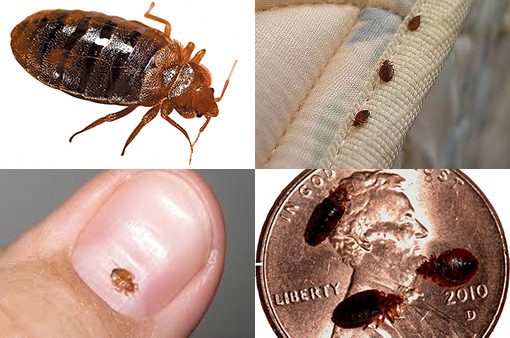Recognizing the Lifecycle of Pests for Targeted Control Strategies
Recognizing the lifecycle of pests is an essential aspect of efficient insect administration techniques. By comprehending the different stages of development that insects undergo, an extra targeted and precise strategy can be embraced to manage their populaces. This knowledge not just loses light on the susceptabilities within the insect lifecycle however additionally paves the means for applying critical procedures that can interrupt their development and recreation cycles. Via a much deeper understanding of just how parasites progress and thrive, customized control techniques can be developed to resolve details points in their lifecycle, eventually resulting in even more successful insect management end results.
Value of Recognizing Pest Lifecycle
Understanding the lifecycle of parasites is necessary for developing reliable and targeted control methods in insect administration. By comprehending the numerous phases an insect undergoes from egg to adult, pest control experts can determine weak spots in the lifecycle where intervention can be most effective. As an example, recognizing when larvae are most energetic can aid determine the ideal timing for using larvicides. Additionally, comprehending the lifespan of a pest species can help in predicting populace development patterns and possible problem threats.
Furthermore, identifying the particular environmental problems required for every phase of the insect's lifecycle can guide choices on environment alteration or exclusion techniques to decrease and disrupt the lifecycle insect populations. This expertise makes it possible for pest management professionals to implement aggressive steps as opposed to counting entirely on responsive treatments, causing even more long-lasting and sustainable bug control services. Eventually, a comprehensive understanding of bug lifecycles equips pest control experts to customize their techniques effectively, lessening environmental impacts and making the most of control end results.
Trick Phases in Pest Advancement
To properly carry out targeted control strategies in pest administration, an important element exists in comprehensively recognizing and understanding the essential stages in parasite growth. Insect growth commonly is composed of several essential stages that are vital for their lifecycle and management.

Susceptabilities in Insect Lifecycle
Throughout the different phases of an insect's lifecycle, distinctive susceptabilities emerge that can be purposefully targeted for effective control procedures (A1 Bed Bug treatment houston). One important vulnerability exists in the egg stage, where parasites are commonly more prone to certain insecticides or biological control agents due to their soft external click here for info shell, making them simpler targets for treatment. Recognizing these vulnerabilities in the bug lifecycle is crucial for establishing efficient and specific control methods that successfully take care of bug populations while reducing ecological impact.
Executing Targeted Control Actions

Executing targeted control measures usually entails a multi-faceted method. This may consist of habitat adjustment to make the environment much less welcoming to pests, such as getting rid of standing water for insect control or sealing entrance points for rats. In addition, biological control methods can be used, where all-natural predators or virus are presented to keep bug populaces in check.
Integrated Bug Management (IPM) approaches that integrate numerous control measures in a coordinated and lasting manner are usually the most effective in accomplishing lasting parasite administration goals. By implementing targeted control steps based on an extensive understanding of pest lifecycles, insect populaces can be successfully controlled while lessening threats to human health and the environment.
Improved Insect Management Practices

In addition, the unification of biological control agents, such as all-natural killers or pathogens of parasites, can help in reducing dependence on chemical pesticides webpage and advertise a more well balanced ecosystem. Carrying out physical obstacles and traps can also belong to enhanced pest administration techniques, offering safe and targeted solutions for parasite control. Furthermore, making use of pheromones and various other semiochemicals can interfere with pest mating patterns and communication, resulting in lowered pest populaces with time.
Conclusion
By recognizing crucial phases in insect growth and susceptabilities in their lifecycle, targeted control procedures can be carried out to lessen parasite populaces. Enhanced insect management methods can help minimize the reliance on broad-spectrum pesticides and advertise even more lasting and ecologically friendly insect control techniques.
Understanding the lifecycle of insects is important for developing effective and targeted control techniques in parasite monitoring. By comprehending the various phases a pest goes via from egg to adult, insect control professionals can identify susceptible factors in the lifecycle where treatment can be most effective. Ultimately, a thorough understanding of parasite lifecycles equips parasite control experts to tailor their techniques efficiently, maximizing and decreasing environmental effects control outcomes.
By executing targeted control actions based on a thorough understanding of bug lifecycles, insect populaces can be effectively controlled while lessening dangers to human health and the atmosphere.
By determining key stages in parasite growth and susceptabilities in their lifecycle, targeted control steps can be executed to decrease pest populaces.
Comments on “Trusted A1 Bed Bug Treatment Houston - Proven Methods”